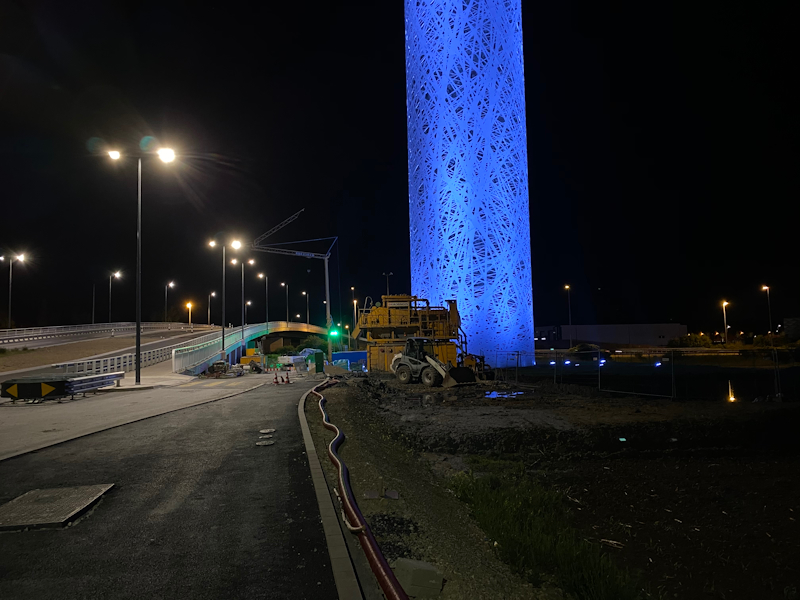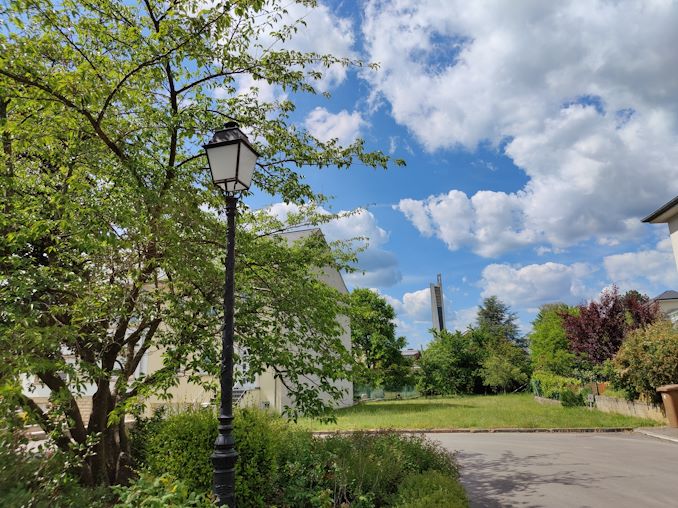The OnePlus 8, OnePlus 8 Pro Review: Becoming The Flagship
by Andrei Frumusanu on June 29, 2020 10:00 AM ESTCamera Recap - Amongst The Best
Last week, we published a more extensive dedicated camera article comparing a larger swath of recent flagship devices that have been released in last few months, including the new OnePlus 8 and OnePlus 8 Pro. I would suggest reading that piece for a more extensive camera analysis of not only the OnePlus 8’s, but also put in better context against its closest competitors:
Read Our Extensive Camera Evaluation For More Samples:
Mobile Flagship Phone Camera Overview 2020 H1: Still Picture Battle
I’ll quickly go over the key characteristics of the two phones in a few samples here:

[ OnePlus 8 ] - [ OnePlus 8 Pro ]
[ iPhone 11 Pro ] - [ iPhone SE ] - [ Pixel 4 ]
[ Galaxy S20U(S) ] - [ Galaxy S20+(E) ]
[ V60 ] - [ Mi 10 Pro ]
[ Mate 30 Pro ] - [ P40 Pro ]
[ Reno3 Pro 5G ] - [ Reno3 Pro ]
[ X-T30 ]
Between the 8 Pro and the regular 8, it’s generally evident that the 8 Pro has the better picture quality thanks to better detail retention and more dynamic range. The phone’s processing is generally amongst the best and competes with Samsung and Apple in terms of handling of tones, although the OnePlus phones more often seem to miss having the better exposure handling, such as in the above scene where both phones are flattening the highlights too much.
In terms of the phones’ main camera 48MP capture modes, it’s the 8 Pro that is the clear winner as the bigger pixels of the superior sensor are able to capture and retain more fine details.
A negative for the phone’s camera processing is that OnePlus continues to apply an artificial darkening filter on the shadows, whilst this increases the contrast of the scenes, it creates unnatural images with elements that nearly clip to black, something that had been introduced last year on the OnePlus 7 Pro as an attempt to copy the Pixel 3’s look – which Google ironically had fixed this aspect on the Pixel 4.

[ OnePlus 8 ]
[ OnePlus 8 Pro ]
[ iPhone 11 Pro ] - [ iPhone SE ] - [ P4 ]
[ Galaxy S20U(S) ]
[ Galaxy S20+(E) ]
[ V60 ]
[ Mi 10 Pro ]
[ Mate 30 Pro ]
[ P40 Pro ]
[ Reno3 Pro 5G ]
[ Reno3 Pro ]
[ X-T30 ]
In terms of telephoto photography, the OnePlus 8 Pro notably is the better phone as it features a dedicated camera module for this task, whilst the OnePlus 8 has to make due with digital cropping, although it’s not as bad thanks to the switch to the camera’s switch to their native 48MP modes.
In the ultra-wide photos, the OnePlus 8 Pro is again the clear winner thanks to its hardware advantages, achieving better details and dynamic range. Both phones are able to showcase good results, although colours aren’t as realistic as on Apple’s and Samsung’s ultra-wides.

[ OnePlus 8 ]
[ OnePlus 8 Pro ]
[ iPhone 11 Pro ] - [ iPhone SE ] - [ Pixel 4 ]
[ Galaxy S20U(S) ]
[ Galaxy S20+(E) ]
[ V60 ]
[ Mi 10 Pro ]
[ Mate 30 Pro ]
[ P40 Pro ]
[ Reno3 Pro 5G ]
[ Reno3 Pro ] - [ X-T30 ]
In low-light photography, OnePlus has been able to make major leaps forward in terms of quality thanks to improved software processing. It’s especially the OnePlus 8 Pro which has the quality lead as the phone’s superior camera sensor showcases a clear advantage to that of the OnePlus 8. In fact, the OnePlus 8 Pro consistently fared as amongst the best performers in low-light photography now, sometimes ending up as the top performer thanks to its excellent new Nightscape implementation.
The 8 Pro’s comparatively large ultra-wide module sensor also means that it’s amongst the best performers in low-light, only being beaten by the even larger sensors of Huawei devices.
One aspect we didn’t cover in our camera comparison article was the OnePlus 8 Pro’s “colour filter camera”. First of all, OnePlus did an absolutely abysmal job in actually describing the technical aspects of this camera and what it actually does. Although switching to this camera module is amongst the colour filter options in the camera UI, its effects are anything but a filter.
Any camera sensor and module on any device out there is able to capture infra-red light by default – it’s just that usually to limit the wavelengths that it sees to that of a human eye, vendors employ an IR blocking filter layer between the camera sensor and the optics. In the OnePlus 8 Pro, this layer is missing, and thus this extra camera module is able to actually capture infrared wavelengths. In fact, hobbyists out there even actively modify their digital cameras to remove this filter to achieve IR photography.
The fact that OnePlus hasn’t been able to explain the technical details of this module in their marketing materials is extremely unfortunate as there’s been a ton of misunderstanding as to what it actually does – even going so far that there’s been a backlash with privacy concerns as the camera can see through some materials that are transparent to IR light but opaque to visible light, with OnePlus even saying they’ll be removing the feature in a software update. I no longer have the phone so I don’t know if it’s actually been disabled or not, but I do find it a pity if it’s gone as it was able to achieve some very unique pictures, especially of vegetation in sunlight.
Read Our Extensive Camera Evaluation For More Samples:
Mobile Flagship Phone Camera Overview 2020 H1: Still Picture Battle
Overall, the OnePlus 8 Pro and OnePlus 8 are both good camera shooters. The regular OnePlus 8 doesn’t convince as much as its hardware disadvantages are clearly limiting what it can achieve. In this regard, the pictures it’s able to produce are adequate but it has trouble compete with the quality of the competition.
The OnePlus 8 Pro is a much better choice if you value the camera experience. OnePlus has made big leaps in the processing and picture quality. In daylight it competes with Apple and Samsung – although I still do think the phone’s shadow handling is too artificial an unrealistic – but that’s a subjective opinion. In low-light, thanks to the new processing and upgraded sensor hardware both on the main sensor and the ultra-wide camera, the OnePlus 8 Pro consistently is amongst the best performers in low-light. Overall, the 8 Pro delivers an excellent camera capture experience that’s plenty versatile.














92 Comments
View All Comments
jaju123 - Monday, June 29, 2020 - link
Hi Andrei thanks for the review.Did you encounter the low brightness green tint issue on the OP8 Pro? I haven't seen any mention of it here.
Thanks
Andrei Frumusanu - Monday, June 29, 2020 - link
I didn't have the problem on my device.MrPhilo - Tuesday, June 30, 2020 - link
New update has increased minimum brightness so you would not see it anymore. Installing a custom kernel and changing the brightness to lowest you will see it.Flunk - Monday, June 29, 2020 - link
Sure, if flagship means adding a bunch of pointless features and charging too much for the phone. I think reviewers failing to take value into account in reviews have to take at least some of the blame for these crazy phone prices.Oneplus' quest to make their products irrelevant has now met its totally forseen conclusion.
BedfordTim - Monday, June 29, 2020 - link
It would be nice to see a flagship camera in something like a P30 Lite.close - Tuesday, June 30, 2020 - link
That's kind of what flagship means... Manufacturers bundle the best they have and when they run out of the good stuff they start bundling trinkets, bells, whistles, ribbons... And for most people buying the flagship isn't a matter of need but of want. They have the money, they want the image, even if many of the actual features are superfluous.I think what the title actually means is that OP started up by branding the devices as "flagship killer", the "80% flagship at 20% of the price" so to speak. With OP8 they are now "just" a flagship. As an OP owner I have a hard time justifying 700-1000E for this. That's not to say it's bad but it doesn't stand out of "the pack" (overstatement, I know) of Android flagships.
pjcamp - Tuesday, June 30, 2020 - link
I dunno. I see flagships subtracting options. You can't have expandable storage, you can't have a headphone jack, but you need to pay more to do without those things.s.yu - Wednesday, July 1, 2020 - link
Couldn't agree more!Retycint - Thursday, July 2, 2020 - link
Flagships were never meant to be good value-for-money. Not in the smartphone industry, not in the electronics industry, not ever.eastcoast_pete - Monday, June 29, 2020 - link
Thanks Andrei! I especially appreciate the section and detail on the video performance. However, that leaves me with a question: so, which phone is currently the best for video? It seems that even the so-called flagship models all have significant problems; one has artifacts, the next doesn't do a good job on stabilizing etc. So, which one is currently the leading candidate?